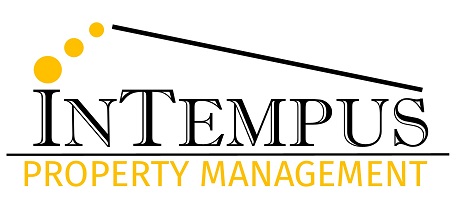In 2025, Canadian buyers and sellers will often use automated valuation models for property estimates. Zolo’s home valuation tool has become one of the more commonly referenced online options in this space. Below is a careful review of Zolo’s real-world accuracy, how the tool functions, and how it compares to others. This article also introduces three alternatives, led by Wahi.
Zolo’s Accuracy: What the Numbers Reveal
Zolo’s tool uses sales data and property attributes to estimate home values rapidly. As of 2025, its median error rate nationwide is 1.9 percent for on-market homes and 6.9 percent for off-market homes. This data means Zolo gets within 1.9 percent of the actual final price on roughly half of properties being actively sold, and within 6.9 percent for unlisted homes. These figures come from independent testing and Zolo’s internal disclosures.
HouseSigma is slightly less precise by this yardstick, with a 2.72 percent on-market error rate and 6.79 percent for off-market homes. Zillow, which covers many properties in the United States and expands gradually in Canada, has a US median error of 7.49 percent for off-market homes as measured in 2025.
It should be noted that broad, national averages do not always capture how well the estimates fit local market trends. In some regions, error rates can vary widely. Local market peculiarities, excessive renovations, unique homes, or sparse sales history can create outliers where estimates deviate more sharply. Recent studies have found swings of tens of thousands of dollars in suburban or rural markets and among homes with limited recent sales or upgrades not recorded in public data.
How Zolo Calculates its Estimates
Zolo’s method relies on several inputs:
- Recently sold comparable properties
- Listing and sales price data for nearby homes
- Canadian Census data, including demographics and property statistics
- Market trend data at the neighborhood and regional levels
- Details like property size, room count, and lot features
While the full formula is private, Zolo has said that the model should be viewed as a starting figure. It does not replace in-person appraisals or a real estate agent’s comparative analysis, and users are reminded to seek out formal valuations for legal matters or high-value decisions.
Estimates are periodically updated. Zolo’s disclosures warn that its automated figures may lag behind true market values in periods of rapid market movement.
National Comparison: Zolo Versus Its Rivals
Zolo’s error numbers fit within Canada’s better-performing valuation tools, especially for homes currently listed. Here is a snapshot based on recent data:
- Zolo: 1.9 percent median error for on-market, 6.9 percent for off-market
- HouseSigma: 2.72 percent on-market, 6.79 percent off-market
- Zillow: 7.49 percent off-market in the United States (Canadian coverage growing)
- Redfin: about 6.47 percent off-market (mainly US; smaller footprint in Canada)
By these metrics, Zolo compares favorably in Canadian metro areas, especially for on-market homes.
In 2025, Wahi has emerged as a preferred tool due to its use of detailed local data and transparency in how its numbers are modeled. While national error rates for Wahi are not extensively documented, real estate agents and market analysts widely rate it as more locally precise for Canadian addresses. This is due largely to Wahi’s emphasis on adapting to regional trends and its frequent updates.
Market Reach and Practical Use
Zolo has solid coverage in Canadian cities and moves gradually into mid-sized and smaller regions. Zillow covers the largest number of homes in the US, with Redfin close behind, serving nearly as many properties, but their presence is not as established outside cities in Canada.
Wahi approaches market coverage differently. It targets depth rather than volume, focusing on properties and neighborhoods where detailed data and recent sales are available. Wahi updates more frequently and includes extra details such as school catchments and commuting options.
For buyers and sellers in Canada’s larger cities, as well as in places with many recent home sales and substantial public record data, both Zolo and Wahi give results that agents describe as close to market reality, with Wahi often cited as best for localized accuracy.
The Limits of Automated Models
All AVMs, including Zolo’s, operate on the principle of comparing similar past sales to estimate value. However, several gaps remain:
- Renovations, additions, and unique improvements are not visible to the model until they appear in sales records.
- Properties with unusual features or luxury upgrades are tougher to assess without comparable recent sales.
- Rural and small-town homes can be especially resistant to accurate modeling if the property is unlike any others recently sold.
- Rapid market changes, common in parts of Canada in 2025, are not reflected in real time and may make any model underestimate or overestimate active home values.
Agents and analysts therefore recommend using AVM estimates as reference points, not as authoritative prices. Reliable pricing for offers, negotiations, inheritance, and estate work continues to rely on comparative market analyses from local agents or professional appraisers.
Field Reports: Zolo’s Performance in Recent Sales
Agents working in Toronto, Ottawa, and Vancouver report that Zolo’s home estimates are typically very close, within a few percent, for urban condos and properties listed with full data in neighborhoods with many recent sales. This precision tails off for custom, heritage, or unusual properties, and in regions where few sales exist. Large homes in certain areas have seen differences, sometimes more than 10 percent, between Zolo’s estimate and the closed sale price, especially when upgrades or unique features were not entered in public records.
These real-life variances reinforce known patterns in AVM performance and the caution required for one-off or high-value properties.
Disclosure and Update Schedules
Zolo publishes the main elements that contribute to its valuations. The methodology blends:
- Comparable past sales
- Census demographic and property information
- Live listings and market trend analysis
- Automated, proprietary adjustments
The company warns consumers publicly that the figures are a starting point for discussion, not a substitute for legally binding appraisals.
Wahi offers a deeper level of disclosure in 2025. It includes:
- Quarterly updates to error ranges at the city or neighborhood level
- Explanation documents outlining the mix of machine learning, census, public, and private real estate feeds
- Extra factors in assessment, such as local school ranking, walkability, and transit
Both Zolo and Wahi refresh their databases regularly, but Wahi’s refresh rate and granular accuracy disclosures have made it popular among real estate professionals.
Where AVMs Have Trouble
Testing by industry groups and third-party analysts has found that error margins increase for:
- Homes that are much older or much newer than average in a given city
- Properties with rare layouts or one-off improvements
- Sales that happen privately, away from the listing service, which the models cannot see
- Markets undergoing fast price changes due to mortgage rates or major population moves
In practice, estimated home values from multiple AVMs may differ by over $50,000 in both big cities and rural areas. Even within the same city, differences of $20,000 or more are not rare. Finished basements, recent remodels, swimming pools, or added floor space are often ignored by AVMs until enough similar properties are sold and recorded.
Recommended Practice for 2025 Home Buyers and Sellers
- Treat online home values as informative entry points. They inform negotiations and rough price setting.
- Check local error rates if available. National medians can hide swings specific to certain cities or towns.
- For legal purposes, estates, or when dealing with unique properties, always consult a real estate agent for a formal comparative market analysis or a certified appraiser.
- Use more than one home valuation tool if possible. Comparing outcomes and asking questions of local experts remains best practice.
Three Valuation Tools to Consider Besides Zolo
1. Wahi: The Most Detailed Option for Canadians
Wahi’s home value estimator leads among alternatives. It uses detailed neighborhood modeling, merging real estate, census, and community data. Its error disclosures are more transparent than most, broken down by region. Wahi’s models also integrate factors like school proximity and commuting. Agents and industry publications regularly mention Wahi as the top choice for those wanting market-specific estimates, especially in places with variable property types such as Quebec, the Greater Toronto Area, and parts of British Columbia.
2. HouseSigma: Consistent, Straightforward, and Trusted
HouseSigma performs strongly in urban markets with a 2.72 percent on-market error rate. Its approach is straightforward: broad data coverage and reliable price tracking. Many agents use HouseSigma alongside their own analyses to help set a price or support negotiations when time is tight.
3. Zillow and Redfin: Broad Reach and Expanding Coverage
Zillow’s tool includes over 100 million US properties, with more being added in Canada each month. Its national off-market error matches the best US options at about 7.49 percent. While not native to Canada, both Zillow and Redfin serve major metros and some rural Canadian regions. They are practical, especially for cross-border comparisons or in areas where coverage from Canadian firms is still expanding. Error tracking is less regionalized for these tools, so practical reliability may vary.
Case Review: Comparing Model Estimates with Actual Sales
In structured tests run by RealEstateWitch and other analyst groups during 2025, error differences between the highest and lowest AVM estimates ranged widely.
- For a downtown city condo, the calculated difference between tools like Zillow and Redfin was more than $53,000 on a single unit.
- For small town, standalone homes, models varied by $19,000 or more on recent sales.
- For homes listed for sale at the time of estimation, all three top models reviewed were within about 2.5 percent of the final selling price in competitive suburban markets.
Industry Consensus and Final Thoughts
Agent associations and consumer advisory groups in Canada agree that AVMs such as Zolo, Wahi, and HouseSigma serve a valuable function for home shopping and sale planning. They offer a convenient way to get rough property values, particularly for common home types in busy areas.
However, these figures have limits. The main influencers of accuracy are the availability of comparable data, local trends, and algorithmic transparency. For most purposes, using model estimates in combination with a real estate agent’s guidance or an appraisal is the most reliable way to price a home for sale or plan a purchase.
Summary
Zolo’s tool is among the most precise for on-market property values in Canada, posting a 1.9 percent national error rate. It is especially consistent for urban, well-documented properties.
Where full local data and regular updates matter, Wahi currently offers the best solution, particularly in variable or fast-moving Canadian markets. HouseSigma also serves buyers and sellers in metro regions with good outcomes, while Zillow and Redfin extend coverage to a huge set of properties, mostly in the US.
Automated valuation models are useful for quick estimates and early research. For firm pricing decisions or unusual properties, professional advice and a full in-person market review remain essential. This balanced approach matches current guidance from both industry experts and consumer organizations.





